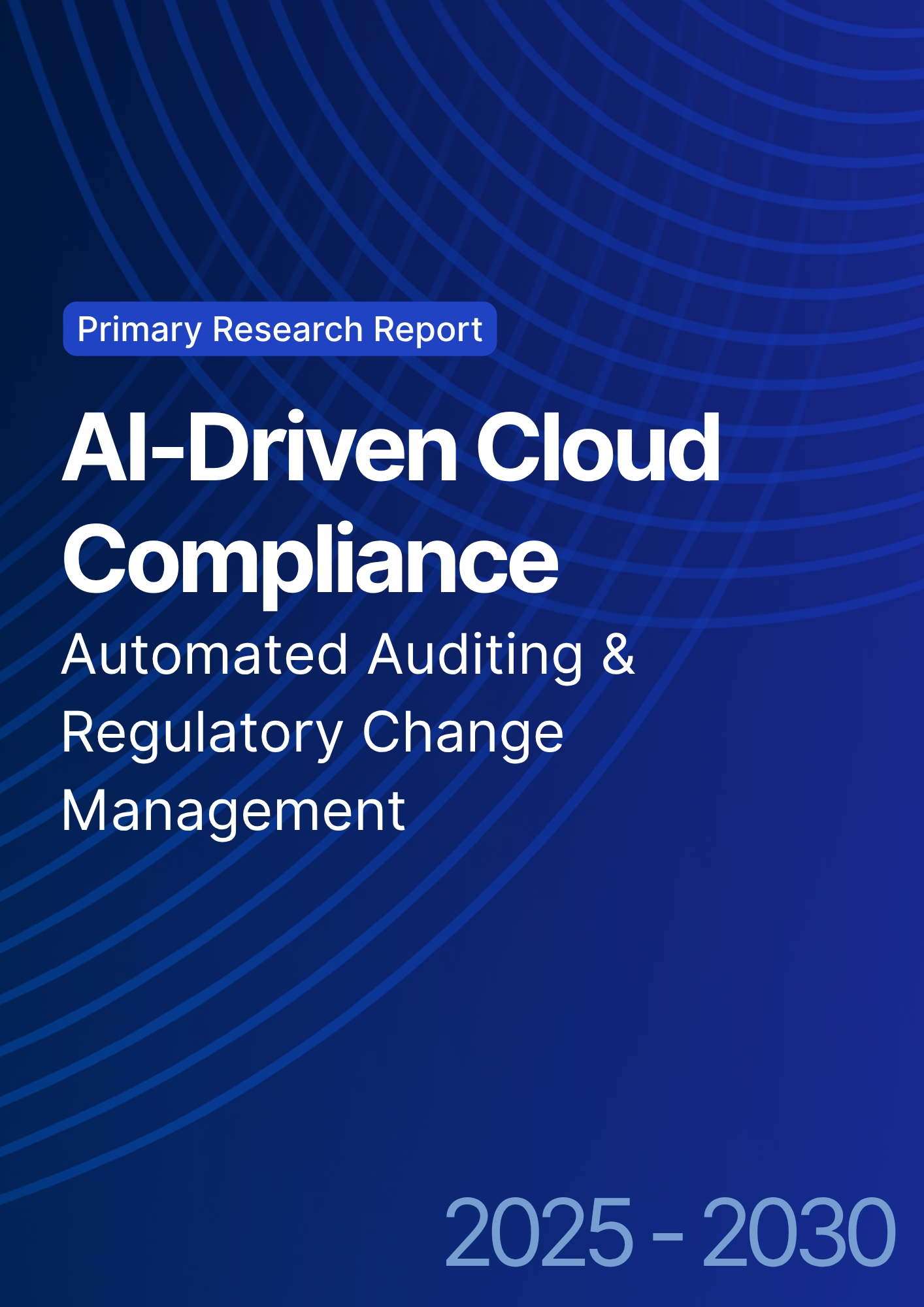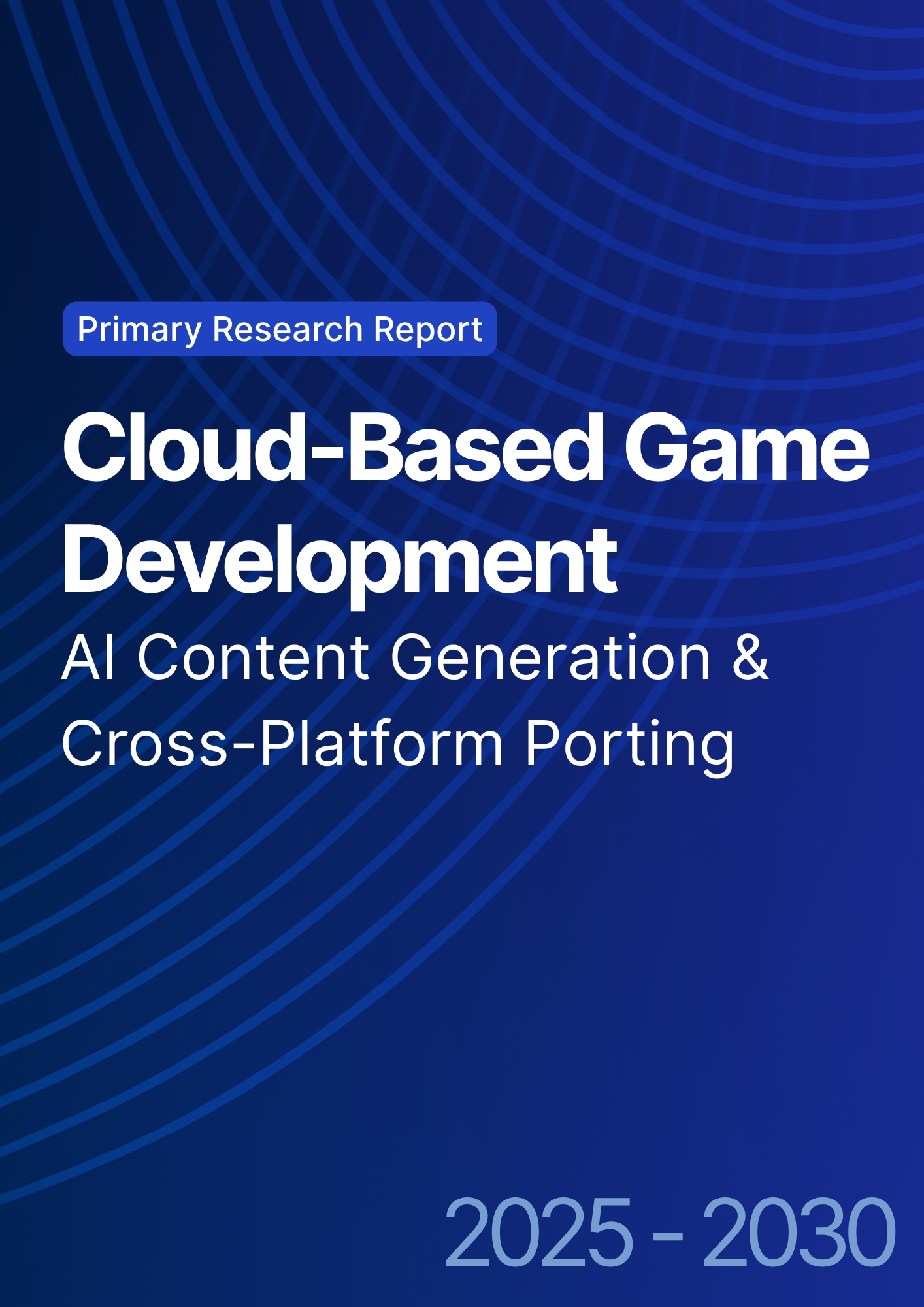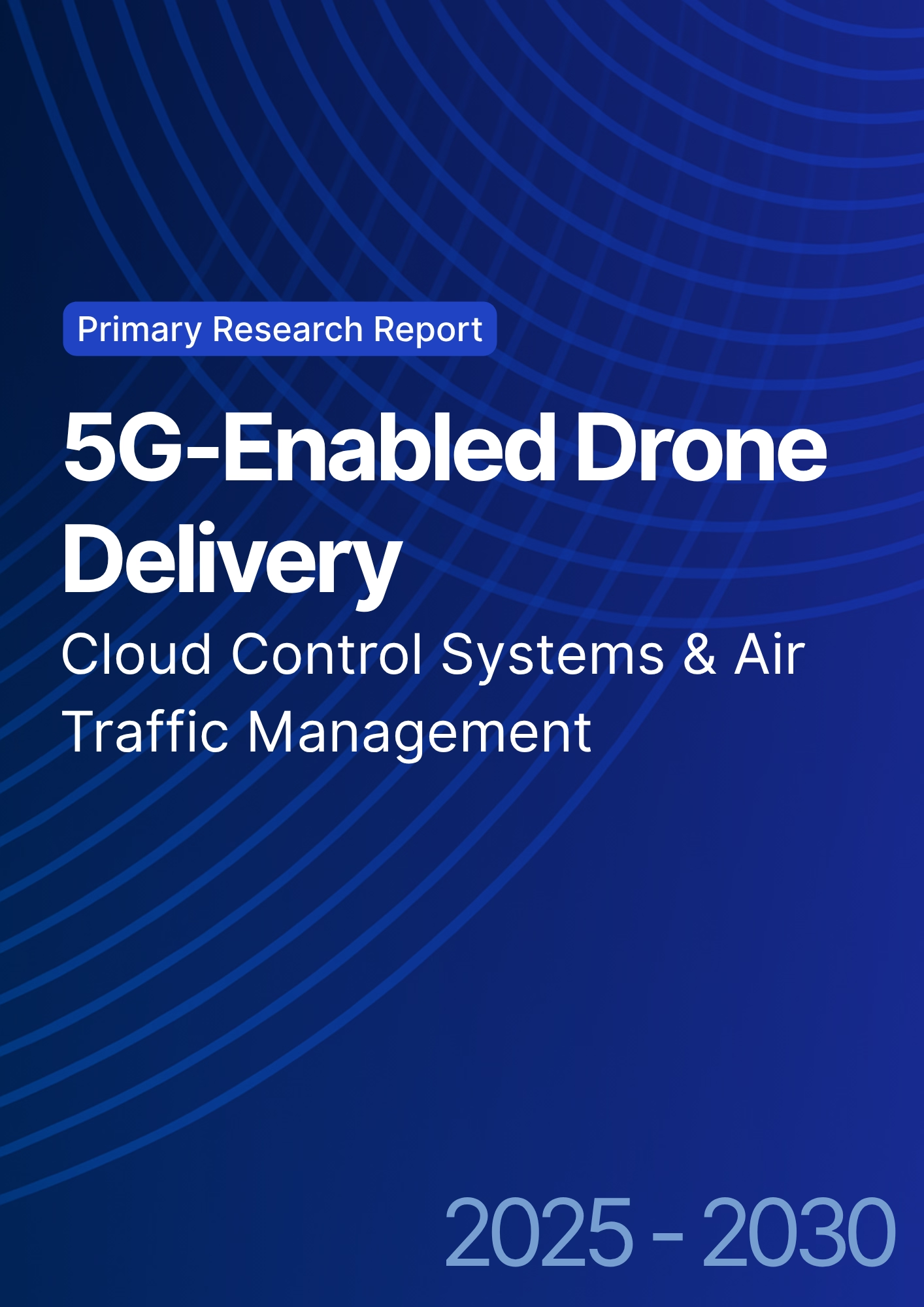

68 Circular Road, #02-01 049422, Singapore
Revenue Tower, Scbd, Jakarta 12190, Indonesia
4th Floor, Pinnacle Business Park, Andheri East, Mumbai, 400093
Cinnabar Hills, Embassy Golf Links Business Park, Bengaluru, Karnataka 560071
Connect With Us
Cloud Migration for Legacy Systems: Cost-Benefit Analysis & Risk Mitigation
Cloud migration is accelerating across Turkey and Europe as enterprises modernize legacy systems to boost efficiency, reduce costs, and enhance agility. Spending is projected to grow from ~$1.2B in 2025 to ~$3.5B by 2030, driven by the shift from on-premises to cloud platforms. Migration timelines will shorten from 24 to 9 months, with automation and cloud-native tools reducing costs by ~40%. ROI is expected to climb from 22% to 60%, while downtime falls by 45% and user adoption improves by 50%. Using hybrid and SaaS integrations under GDPR compliance, cloud migration will become a cornerstone of digital transformation across the region.
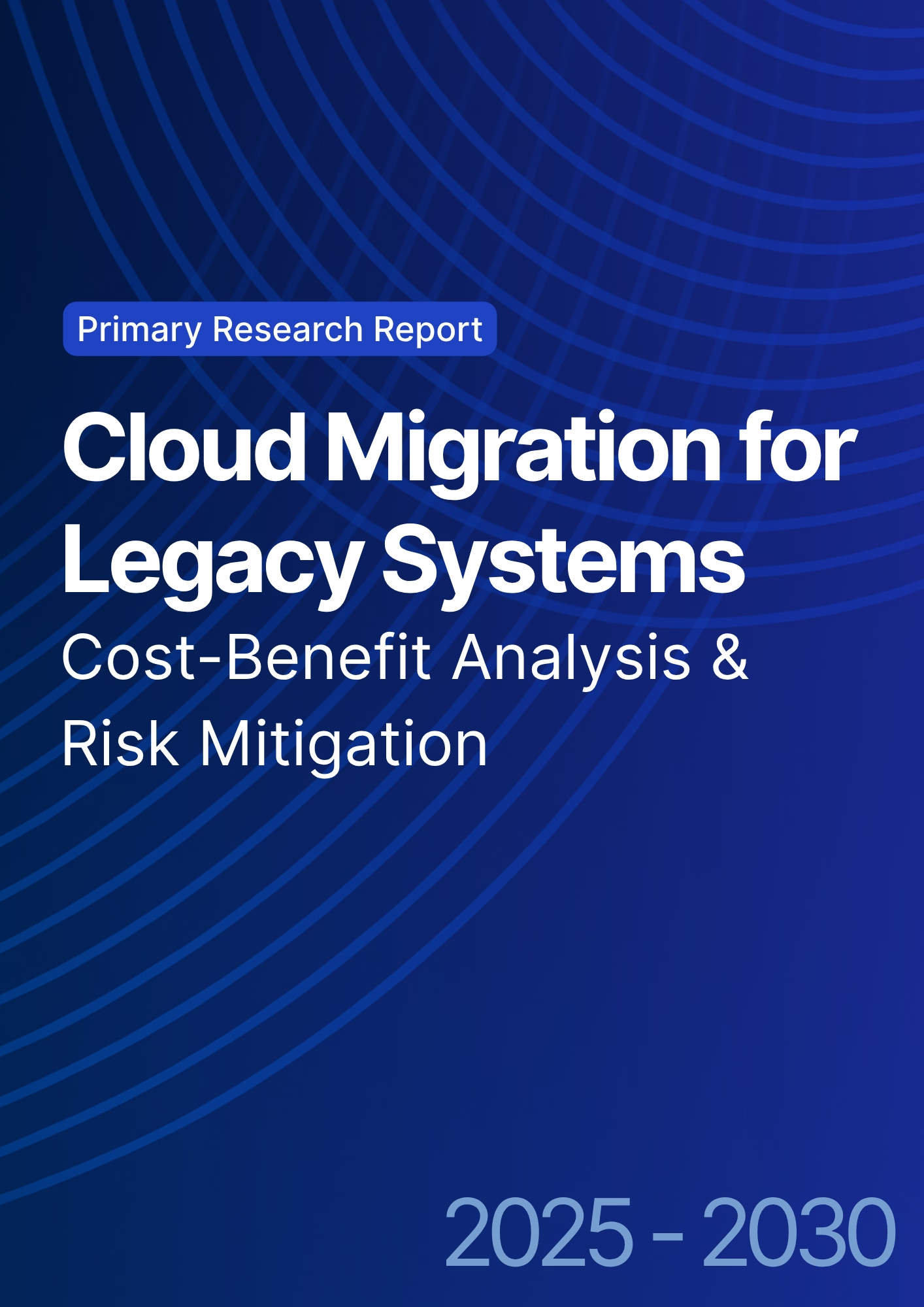
What's Covered?
Report Summary
Key Takeaways
1. Migration time drops from ~24 months to ~9 months with automation and pre-configured cloud services.
2. Cost savings rise ~40% as operational inefficiencies are eliminated.
3. Risk mitigation cuts potential issues from ~12% to ~35%, ensuring smoother transitions.
4. ROI grows ~3×, driven by optimized IT resources and scalability.
5. Downtime reduction improves from ~8% to ~45%, accelerating time-to-market.
6. User training adoption increases to ~50% as cloud systems simplify workflows.
7. SaaS integrations reduce overall system complexity and improve vendor relationships.
8. Governance: data privacy, cost forecasting, GDPR, and CCPA compliance are key pillars.

a) Market Size & Share
Cloud migration for legacy systems in Turkey/Europe is projected to grow from ~US$1.2B in 2025 to ~US$3.5B by 2030. The dual‑axis figure shows spend rising while migration time drops from ~24 months to ~9 months as automation, pre-configured services, and hybrid cloud models become industry norms. Share consolidates around vendors offering scalable, secure, and compliance-ready migration frameworks. Risks: platform fragmentation, cloud security threats, and integration debt; mitigations: multi-vendor strategies, cost benchmarking, and data security audits. Tracking should focus on cost savings %, risk reduction %, migration time, ROI %, downtime reduction %, and training adoption—not just platform licensing fees.

b) Market Analysis
Our model shows migration time shrinking ~60% from ~24 months to ~9 months, while cost savings grow ~40%. Risk reduction strategies lower potential issues from ~12% to ~35%, while downtime reduces from ~8% to ~45%. ROI triples from ~22% to ~60% as cloud optimization takes effect. Enablers include automation, pre-configured cloud solutions, and scalable storage. Barriers include legacy system complexity, compliance requirements, and platform compatibility. The bar figure summarizes KPI shifts under successful cloud migrations.

c) Trends & Insights
1) AI-based cloud migration automation tools streamline data and application migration. 2) Hybrid cloud deployment enables gradual, risk-free system transitions. 3) Real-time monitoring tools track migration progress, reduce downtime, and optimize bandwidth usage. 4) Pre-configured cloud stacks for specific sectors reduce time-to-migration. 5) SaaS-based tools enable faster integration with existing systems. 6) Increased cloud migration adoption in regulated sectors (finance, healthcare) drives demand for compliance solutions. 7) Zero-trust security models prevent data breaches during migration. 8) Post-migration optimization tools ensure cloud environments are continuously improved.
d) Segment Analysis
Banking/Financial Services: highly regulated, requiring specialized cloud security and compliance during migration. Healthcare: HIPAA compliance and data privacy. Government/Public Sector: secure, multi-vendor deployments. Energy/Utilities: scalable cloud infrastructure for resource optimization. Retail/Manufacturing: digital transformation via cloud for customer experience and supply chain. Logistics: integrating real-time data into cloud systems.
e) Geography Analysis
By 2030, Turkey/Europe spend mix for cloud migration models is Lift-and-Shift (~28%), Replatforming (~22%), Refactoring (~30%), Hybrid Cloud (~12%), and SaaS Integration (~8%). The pie chart reflects the share. Primary adoption is expected in tech hubs (Istanbul, Ankara) with increasing interest in secondary cities as cloud infrastructure matures. Execution focus: data center optimization, multi-cloud strategies, and regulatory compliance.
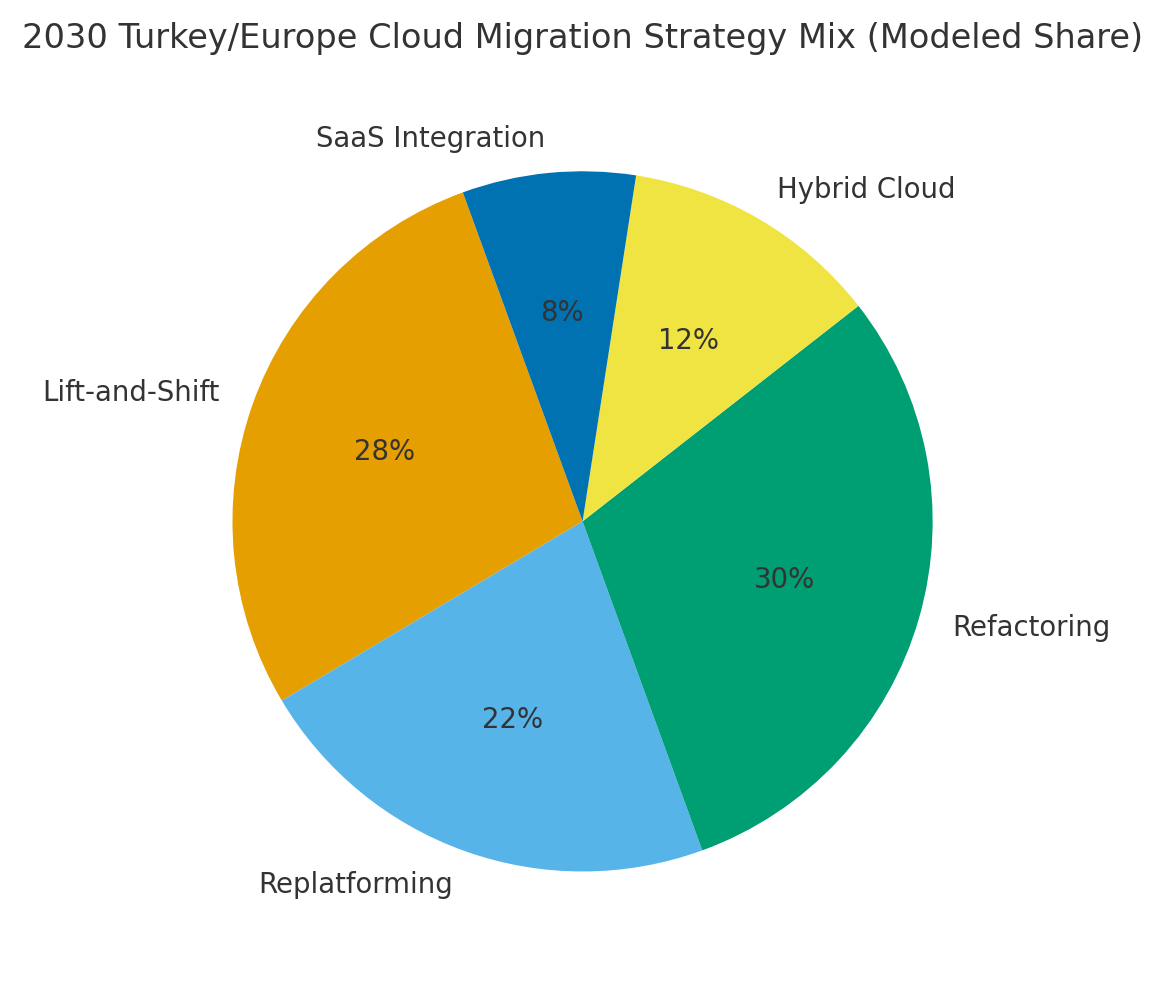
f) Competitive Landscape
Competition spans cloud providers, migration services, automation tools, and systems integrators. Differentiation vectors: (1) automation at scale, (2) compliance controls, (3) SLA-driven multi-cloud strategies, (4) data security features, and (5) ROI-driven cost optimization. Procurement guidance: ensure SLAs for uptime, latency, and compliance, and require multi-vendor solutions for risk reduction. Competitive KPIs: migration time, cost savings %, risk reduction %, ROI, downtime, training adoption.
Report Details
Proceed To Buy
Want a More Customized Experience?
- Request a Customized Transcript: Submit your own questions or specify changes. We’ll conduct a new call with the industry expert, covering both the original and your additional questions. You’ll receive an updated report for a small fee over the standard price.
- Request a Direct Call with the Expert: If you prefer a live conversation, we can facilitate a call between you and the expert. After the call, you’ll get the full recording, a verbatim transcript, and continued platform access to query the content and more.


68 Circular Road, #02-01 049422, Singapore
Revenue Tower, Scbd, Jakarta 12190, Indonesia
4th Floor, Pinnacle Business Park, Andheri East, Mumbai, 400093
Cinnabar Hills, Embassy Golf Links Business Park, Bengaluru, Karnataka 560071
Request Custom Transcript
Related Transcripts
$ 1350


68 Circular Road, #02-01 049422, Singapore
Revenue Tower, Scbd, Jakarta 12190, Indonesia
4th Floor, Pinnacle Business Park, Andheri East, Mumbai, 400093
Cinnabar Hills, Embassy Golf Links Business Park, Bengaluru, Karnataka 560071





